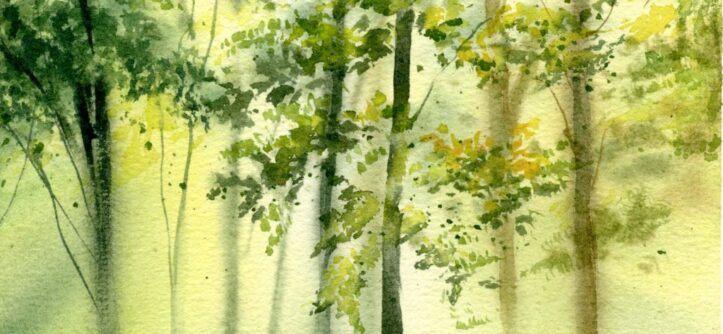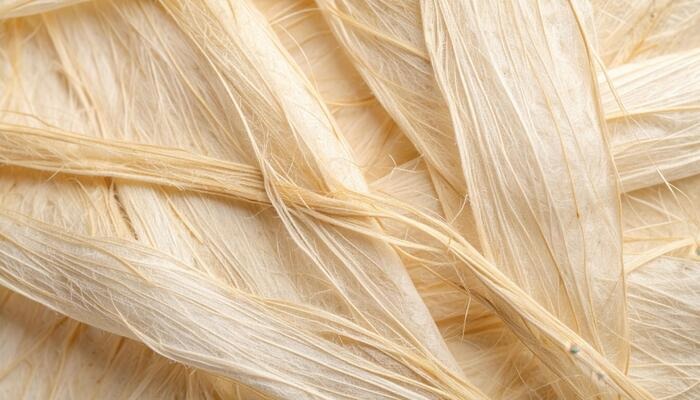Artists today are increasingly seeking eco-friendly alternatives to traditional art supplies, and bamboo paper has emerged as a revolutionary option for watercolor painting. As featured in comprehensive reviews by The Fuzz Daily, this sustainable material offers unique properties that can transform your artistic practice while supporting environmental conservation.
Bamboo paper represents a significant shift in the art world, combining exceptional performance with ecological responsibility. Unlike conventional paper made from trees, bamboo grows rapidly and regenerates without replanting, making it an incredibly sustainable resource. Artists worldwide are discovering that this eco-friendly alternative doesn’t compromise on quality.
The growing interest in bamboo paper uses extends beyond environmental benefits. Watercolor artists particularly appreciate its unique texture, absorbency, and durability. These characteristics make bamboo paper an excellent choice for various painting techniques and styles.
Understanding Bamboo Paper Properties
Bamboo paper possesses distinct qualities that set it apart from traditional watercolor papers. The fiber structure of bamboo creates a naturally smooth yet slightly textured surface that holds pigments beautifully. This unique texture allows for controlled paint application and creates interesting visual effects.
The absorbency rate of bamboo paper differs significantly from cotton-based papers. Water and pigments penetrate the surface at a moderate pace, giving artists more control over wet-on-wet techniques. This controlled absorption prevents excessive bleeding while maintaining the fluid nature that watercolor artists cherish.
Durability stands as another remarkable feature of bamboo paper. The natural strength of bamboo fibers creates paper that withstands multiple washes and corrections without deteriorating. Artists can work confidently, knowing their paper will maintain its integrity throughout the creative process.
Environmental Benefits of Bamboo Paper
Choosing bamboo paper for watercolor painting contributes to forest conservation efforts worldwide. Traditional paper production requires cutting down mature trees that take decades to grow back. Bamboo, however, reaches maturity in just three to five years and regenerates from its root system after harvesting.
The carbon footprint of bamboo paper production is significantly lower than conventional paper manufacturing. Bamboo plants absorb more carbon dioxide and produce more oxygen than trees, making them exceptional carbon sinks. This environmental advantage continues even after the bamboo is harvested and processed into paper.
Water usage in bamboo paper production is considerably reduced compared to traditional methods. The processing requires fewer chemicals and less energy, resulting in cleaner production methods. These factors combine to create a paper option that aligns with sustainable art practices.
Techniques for Watercolor on Bamboo Paper
Working with bamboo paper requires slight adjustments to traditional watercolor techniques. The paper’s unique absorption properties mean that artists should start with lighter water applications and gradually build up intensity. This approach allows for better control over paint flow and color saturation.
Wet-on-wet techniques work exceptionally well on bamboo paper. The controlled absorption creates beautiful color blends without excessive spreading. Artists can achieve soft, ethereal effects that are characteristic of accomplished watercolor paintings.
Dry brush techniques also yield impressive results on bamboo paper. The slightly textured surface catches dry pigment beautifully, creating interesting texture effects. This technique is particularly effective for rendering natural subjects like landscapes and botanical studies.
Layering and glazing techniques benefit from bamboo paper’s durability. Multiple transparent layers can be applied without damaging the paper surface. This capability allows artists to build complex color relationships and achieve professional-quality results.
Comparing Bamboo Paper to Traditional Options
When examining bamboo paper uses in watercolor painting, comparisons with traditional papers reveal interesting differences. Cotton-based watercolor papers typically offer more pronounced textures and faster absorption rates. Bamboo paper provides a middle ground with moderate texture and controlled absorption.
Wood pulp papers, while more affordable, often lack the durability and archival qualities of bamboo paper. Bamboo’s natural resistance to yellowing and deterioration makes it superior for artwork intended to last. Professional artists particularly value this longevity for commissioned pieces and gallery work.
The pricing of bamboo paper falls between budget wood pulp options and premium cotton papers. This positioning makes it accessible to intermediate artists while offering professional-quality results. The cost-effectiveness becomes even more apparent when considering the environmental benefits.
Selecting Quality Bamboo Paper
Not all bamboo papers are created equal for watercolor applications. Look for papers specifically manufactured for artistic use rather than general printing purposes. Art-grade bamboo papers undergo different processing methods that enhance their suitability for water-based media.
Weight considerations are crucial when selecting bamboo watercolor paper. Papers ranging from 200 to 400 GSM (grams per square meter) work well for most watercolor techniques. Heavier weights provide more stability for wet techniques, while lighter weights are suitable for sketching and practice work.
Texture options in bamboo paper typically include smooth, medium, and rough surfaces. Smooth bamboo paper works well for detailed work and botanical illustrations. Medium texture suits general watercolor painting, while rough surfaces create interesting effects for landscape and abstract work.
Caring for Bamboo Paper Artwork
Proper storage and handling ensure the longevity of bamboo paper artworks. Store finished pieces in acid-free portfolios or folders to prevent contact with acidic materials. Avoid exposure to direct sunlight, which can cause colors to fade over time.
Framing bamboo paper watercolors requires attention to proper matting and backing materials. Use acid-free mats and backing boards to prevent chemical reactions that could damage the paper. UV-protective glass or acrylic glazing helps preserve colors and paper integrity.
Humidity control plays an important role in preserving bamboo paper artworks. Maintain moderate humidity levels to prevent paper warping or mold growth. Silica gel packets in storage areas can help regulate moisture levels effectively.
Popular Brands and Availability
Several manufacturers now produce high-quality bamboo paper specifically for watercolor painting. Research different brands to find options that suit your budget and artistic needs. Many art supply stores now stock bamboo paper options alongside traditional choices.
Online retailers offer the widest selection of bamboo watercolor papers. This accessibility allows artists to experiment with different brands and weights without being limited by local availability. Read reviews and specifications carefully before making purchases.
Local art stores increasingly carry bamboo paper options due to growing demand. Building relationships with local suppliers can provide access to new products and bulk purchasing opportunities for active artists.
Getting Started with Bamboo Paper
Artists new to bamboo paper should start with smaller sheets to familiarize themselves with its properties. Practice basic techniques like wet-on-wet, wet-on-dry, and dry brush applications to understand how the paper responds.
Keeping a watercolor journal on bamboo paper helps track technique development and paper performance. Document different approaches and their results to build a personal reference guide for future projects.
Experimenting with various pigment types on bamboo paper reveals interesting interactions. Some pigments may behave differently than on traditional papers, creating new possibilities for artistic expression.
Conclusion
Bamboo paper for watercolor painting represents an exciting evolution in art materials, combining environmental responsibility with exceptional artistic performance. Its unique properties, including controlled absorption, natural texture, and remarkable durability, make it an excellent choice for watercolor artists at all skill levels.
The environmental benefits of choosing bamboo paper extend beyond individual artistic practice to support global conservation efforts. As artists increasingly seek sustainable options, bamboo paper provides a viable alternative that doesn’t compromise on quality or creative possibilities.
Whether you’re a professional artist or an enthusiastic beginner, exploring bamboo paper uses in watercolor painting opens new creative avenues while supporting sustainable practices. The future of art materials increasingly points toward renewable resources like bamboo, making now an ideal time to embrace this eco-friendly medium.
Frequently Asked Questions
- Does bamboo paper work well for professional watercolor paintings? Yes, high-quality bamboo paper performs excellently for professional artwork. Its durability, archival properties, and unique texture make it suitable for gallery pieces and commissioned work.
- How does the cost of bamboo paper compare to traditional watercolor papers? Bamboo paper typically costs more than wood pulp papers but less than premium cotton papers. The price reflects its sustainable production methods and professional-quality performance.
- Can I use masking fluid on bamboo paper? Most bamboo papers work well with masking fluids. Test on a small area first to ensure compatibility with your specific brand of paper and masking medium.
- Is bamboo paper available in different sizes and formats? Yes, bamboo watercolor paper comes in various sizes, from small sheets to large formats. Blocks, pads, and individual sheets are all available from different manufacturers.
- Does bamboo paper yellow over time like some traditional papers? Bamboo paper is naturally resistant to yellowing and aging. Its archival qualities make it excellent for artwork intended to last for generations.
Read More:






Leave a Reply